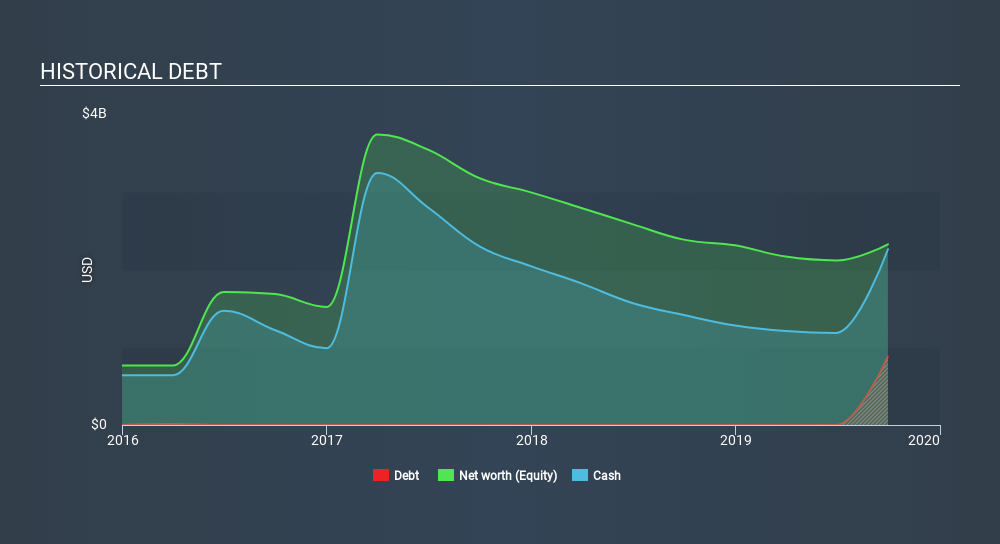- United States
- /
- Interactive Media and Services
- /
- NYSE:SNAP
Does Snap (NYSE:SNAP) Have A Healthy Balance Sheet?

Howard Marks put it nicely when he said that, rather than worrying about share price volatility, 'The possibility of permanent loss is the risk I worry about... and every practical investor I know worries about. When we think about how risky a company is, we always like to look at its use of debt, since debt overload can lead to ruin. As with many other companies Snap Inc. (NYSE:SNAP) makes use of debt. But should shareholders be worried about its use of debt?
Why Does Debt Bring Risk?
Debt and other liabilities become risky for a business when it cannot easily fulfill those obligations, either with free cash flow or by raising capital at an attractive price. Part and parcel of capitalism is the process of 'creative destruction' where failed businesses are mercilessly liquidated by their bankers. However, a more common (but still painful) scenario is that it has to raise new equity capital at a low price, thus permanently diluting shareholders. Of course, debt can be an important tool in businesses, particularly capital heavy businesses. The first step when considering a company's debt levels is to consider its cash and debt together.
Check out our latest analysis for Snap
What Is Snap's Net Debt?
The image below, which you can click on for greater detail, shows that at September 2019 Snap had debt of US$880.4m, up from none in one year. However, it does have US$2.26b in cash offsetting this, leading to net cash of US$1.38b.

How Healthy Is Snap's Balance Sheet?
The latest balance sheet data shows that Snap had liabilities of US$369.1m due within a year, and liabilities of US$1.17b falling due after that. On the other hand, it had cash of US$2.26b and US$374.1m worth of receivables due within a year. So it can boast US$1.09b more liquid assets than total liabilities.
This surplus suggests that Snap has a conservative balance sheet, and could probably eliminate its debt without much difficulty. Succinctly put, Snap boasts net cash, so it's fair to say it does not have a heavy debt load! There's no doubt that we learn most about debt from the balance sheet. But ultimately the future profitability of the business will decide if Snap can strengthen its balance sheet over time. So if you're focused on the future you can check out this free report showing analyst profit forecasts.
Over 12 months, Snap reported revenue of US$1.5b, which is a gain of 43%, although it did not report any earnings before interest and tax. Shareholders probably have their fingers crossed that it can grow its way to profits.
So How Risky Is Snap?
By their very nature companies that are losing money are more risky than those with a long history of profitability. And we do note that Snap had negative earnings before interest and tax (EBIT), over the last year. Indeed, in that time it burnt through US$417m of cash and made a loss of US$985m. While this does make the company a bit risky, it's important to remember it has net cash of US$1.38b. That means it could keep spending at its current rate for more than two years. With very solid revenue growth in the last year, Snap may be on a path to profitability. By investing before those profits, shareholders take on more risk in the hope of bigger rewards. The balance sheet is clearly the area to focus on when you are analysing debt. However, not all investment risk resides within the balance sheet - far from it. For instance, we've identified 3 warning signs for Snap that you should be aware of.
If, after all that, you're more interested in a fast growing company with a rock-solid balance sheet, then check out our list of net cash growth stocks without delay.
If you spot an error that warrants correction, please contact the editor at editorial-team@simplywallst.com. This article by Simply Wall St is general in nature. It does not constitute a recommendation to buy or sell any stock, and does not take account of your objectives, or your financial situation. Simply Wall St has no position in the stocks mentioned.
We aim to bring you long-term focused research analysis driven by fundamental data. Note that our analysis may not factor in the latest price-sensitive company announcements or qualitative material. Thank you for reading.
About NYSE:SNAP
Snap
Operates as a technology company in North America, Europe, and internationally.
Excellent balance sheet and good value.
Similar Companies
Market Insights
Community Narratives



